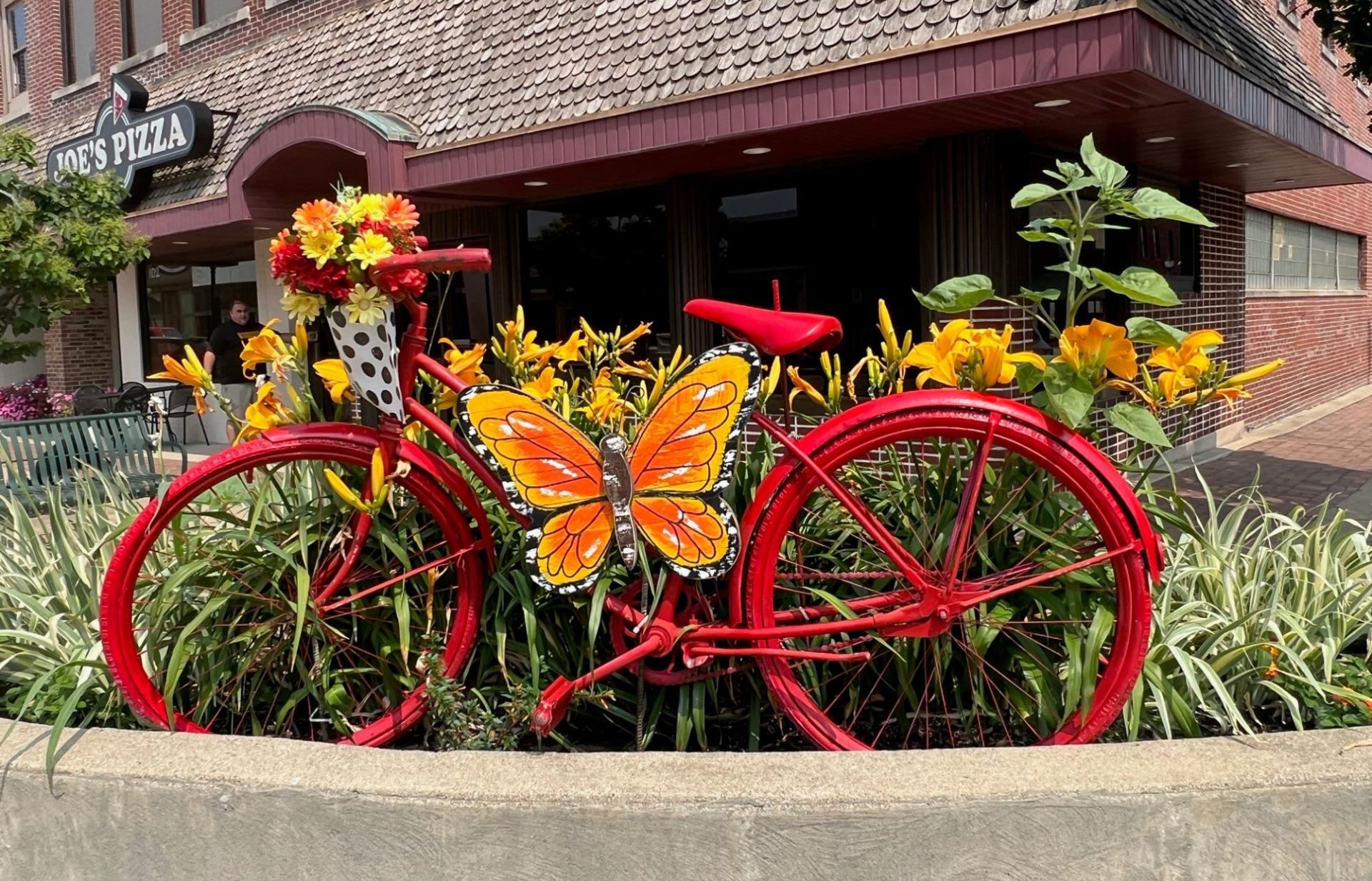This month’s summer adventure took me about 25 to 30 minutes south on I-57 to Tuscola, on a morning tinged with wildfire smoke. I was glad that this excursion wasn’t going to include a hike.
Until this week, my experiences with Tuscola have been rather limited. I’ve been to the outlet shops — the last visit probably 15+ years ago. They’ve really taken a turn in recent years, with very few stores left. I’ve also taken a kid to the DMV for her permit, because even though we literally live five minutes from the one in Champaign, it’s sort of awful. Do not recommend.
I know other things about Tuscola. I know that it’s home to Odd Fellows Lodge #316, an organization that existed in the town from the 1800s until the 1950s, and was relatively recently revived by Ainslie Heilich, owner of Vintage Karma tattoo shop. The lodge lives above the shop, and it’s (according to Henrich when he spoke to Smile Politely in 2018), “a lodge for creative individuals consisting of musicians and artists with a ‘focus to improve and elevate our community to make a better world.’” Each year they host the Odd Market, featuring various regional artists and makers.
I know that Tuscola has an annual Pride event, which has materialized in the past few years thanks to Odd Fellow Michelle Dellorso and the Tuscola GSA Booster Club. I spoke with Dellorso last year about the origins of the club, and how they are showing up for LGBTQ+ kids and teens in a small town. The booster club hosted their 3rd annual Pound the Pavement for Pride 5K this month, and their 2nd annual Queens in the Corn drag show.
As I shared in my previous summer travels installment, where I spent a morning in Monticello, it’s heartening to see when there are people in small communities willing to champion progressive ideas and stand up for historically marginalized people. It bears repeating that most towns in this area were once sundown towns. The History and Social Justice website hosted by Tougaloo College describes Klan rallies taking place in Tuscola in the 1920s. I will also note that in looking through our previous SP coverage of Tuscola, there was an instance several years ago where the high school was going to host the retired U of I mascot for a basketball game against Sullivan (a school that still uses a derogatory term). They canceled the appearance.
I also know about Flesor’s Candy Kitchen, a soda fountain, candy shop, and restaurant with a long history in the area. They recently received a $40,000 grant from the Backing Historic Small Restaurants Grant Program. Be sure to read Alyssa’s review of Sweet Greeks: the origin story of Tuscola’s Flesor Candy Kitchen, written by current co-owner Ann Flesor Beck.
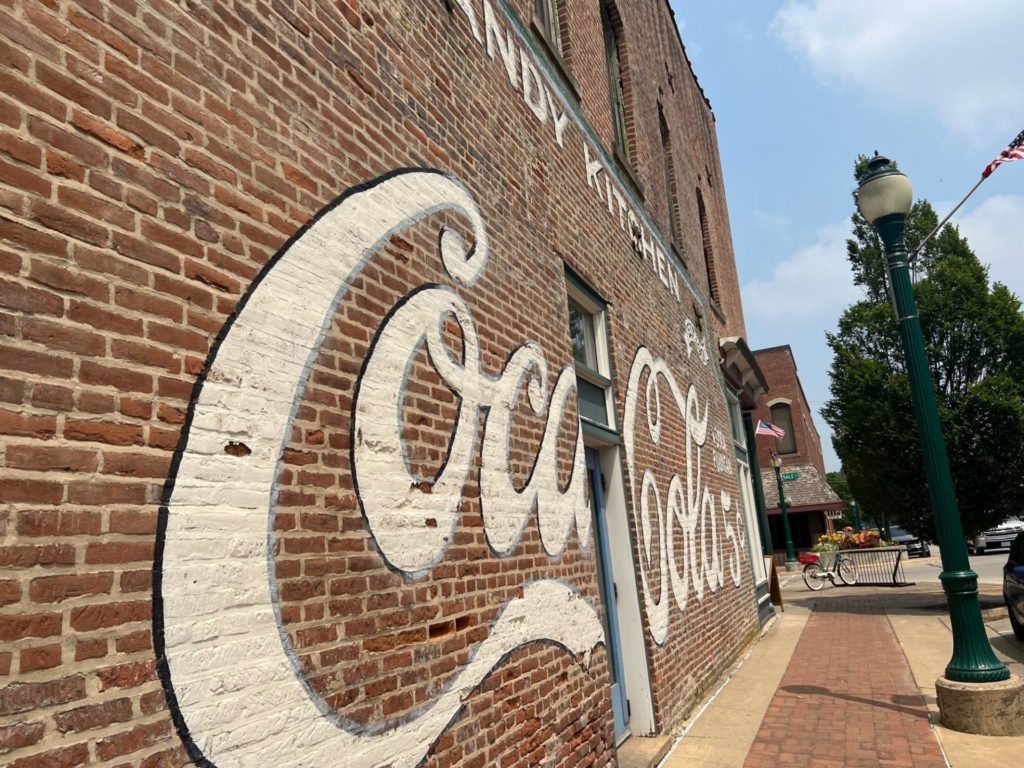
Flesor’s is where I began my day of exploring Tuscola. Though I’ve known about the establishment for quite some time, this was my first visit. Because of the timing of my day, I decided against ordering from the soda fountain. Their website says ice cream and soda fountain drinks are available all day, but I wasn’t feeling it at 9 a.m. Their breakfast menu has all the basics: eggs, pancakes, french toast, biscuits and gravy, omelets. One of the featured items is smothered hash browns ($8.95), which is a plate of hash browns (the shredded kind), topped with sauteed red onions, sausage gravy, and eggs prepared how you like them. I like eggs prepared pretty much all the ways, but decided on scrambled.
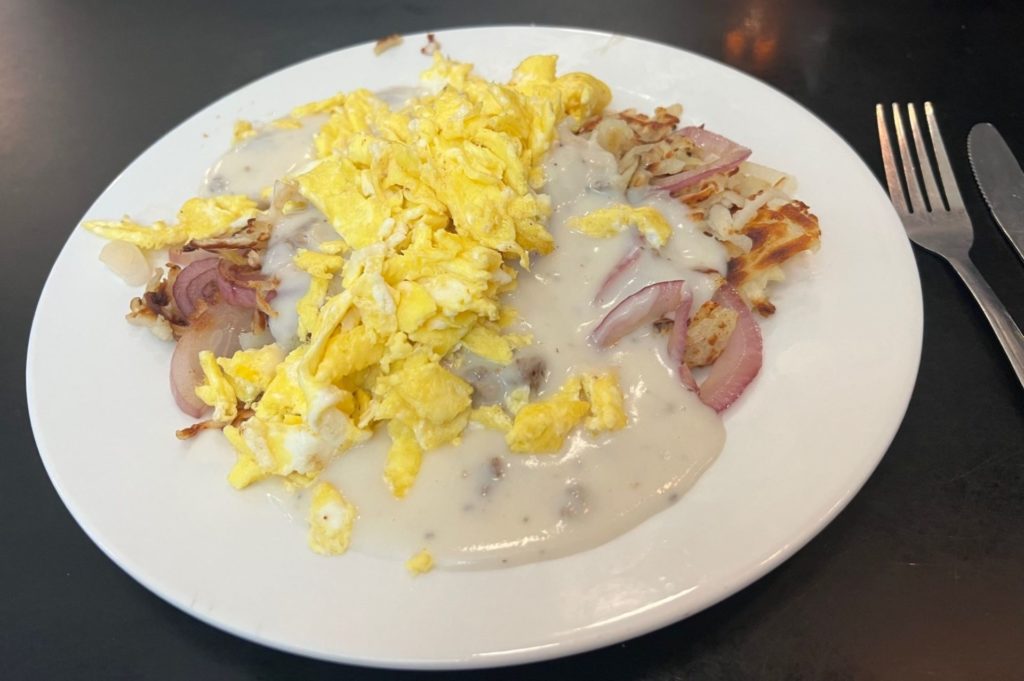
The food came out quickly, and it was a generous portion. It was everything you might expect smothered hash browns to be: a big ‘ole plate of comfort food. The gravy was flavorful, and had plenty of sausage in it. It was all pretty no frills, but tasty and filling. I added a touch of hot sauce, and that was a great idea, if I do say so myself.
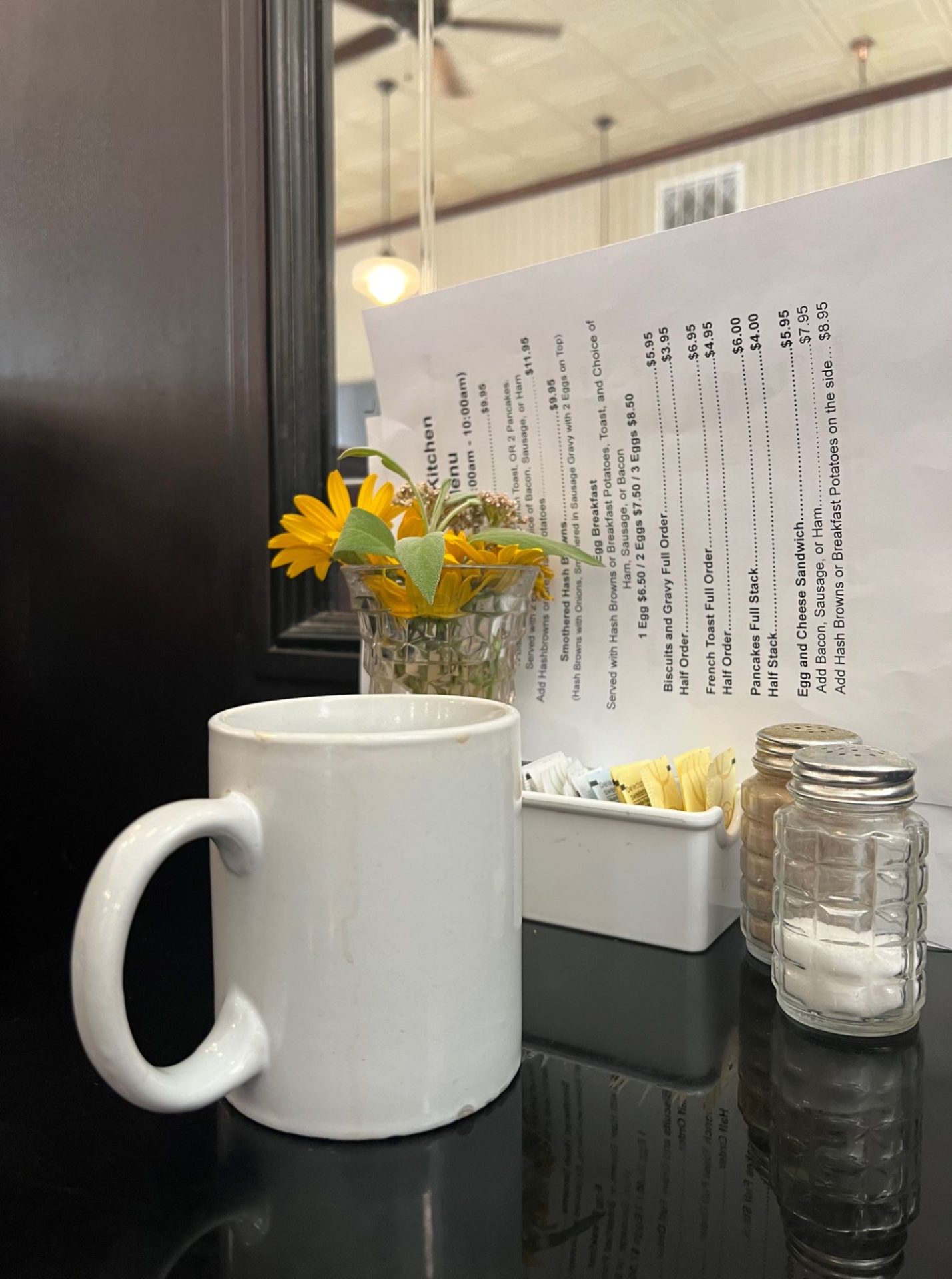
Their coffee was good too, a solid, strong diner coffee.
I was of course drawn in by the candy counter, but since I had other business in town I decided to come back later rather than leave it to melt in my car.
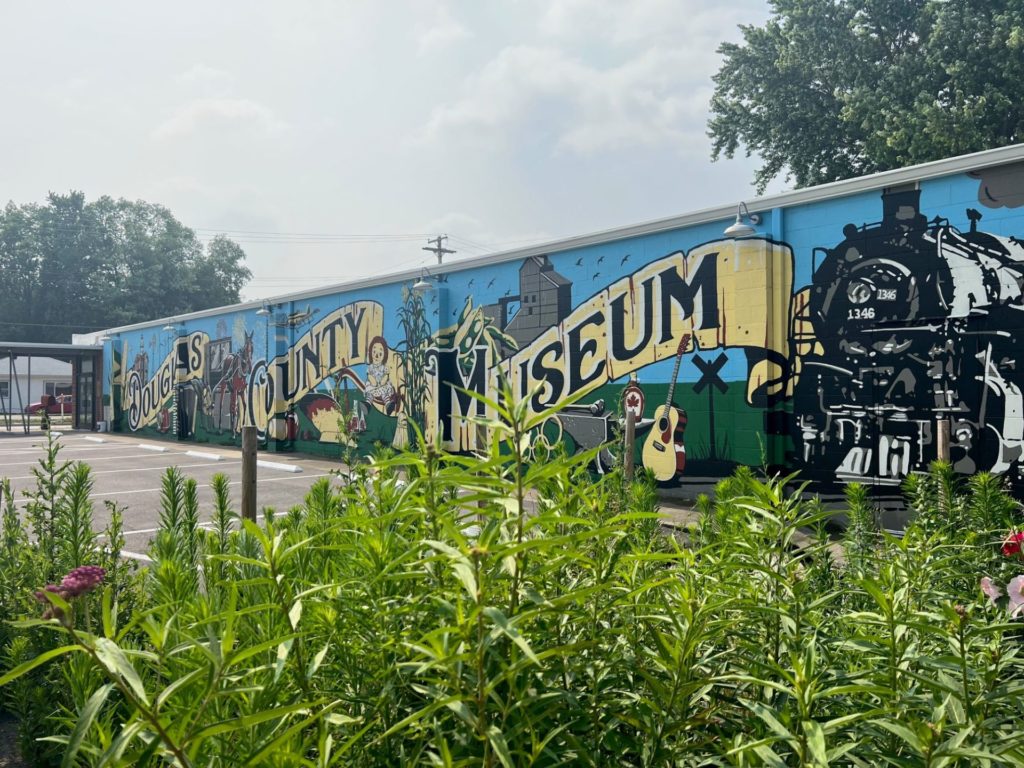
On my way into town I passed the Douglas County Museum, so I doubled back to go check that out. Little museums like this are such a labor of love, kept up by people who want to make sure that historical narratives of places are not lost. Also, I like history, and I like being able to take my time and read about various museum displays, which I can only really do when I’m by myself. The side of the building has a colorful mural, designed by the previously mentioned Heilich, and painted by members of the museum board and the community. A QR code next to the mural takes you to the museum website, and an explanation of each of the images that were included. They all tie into the history of the county.
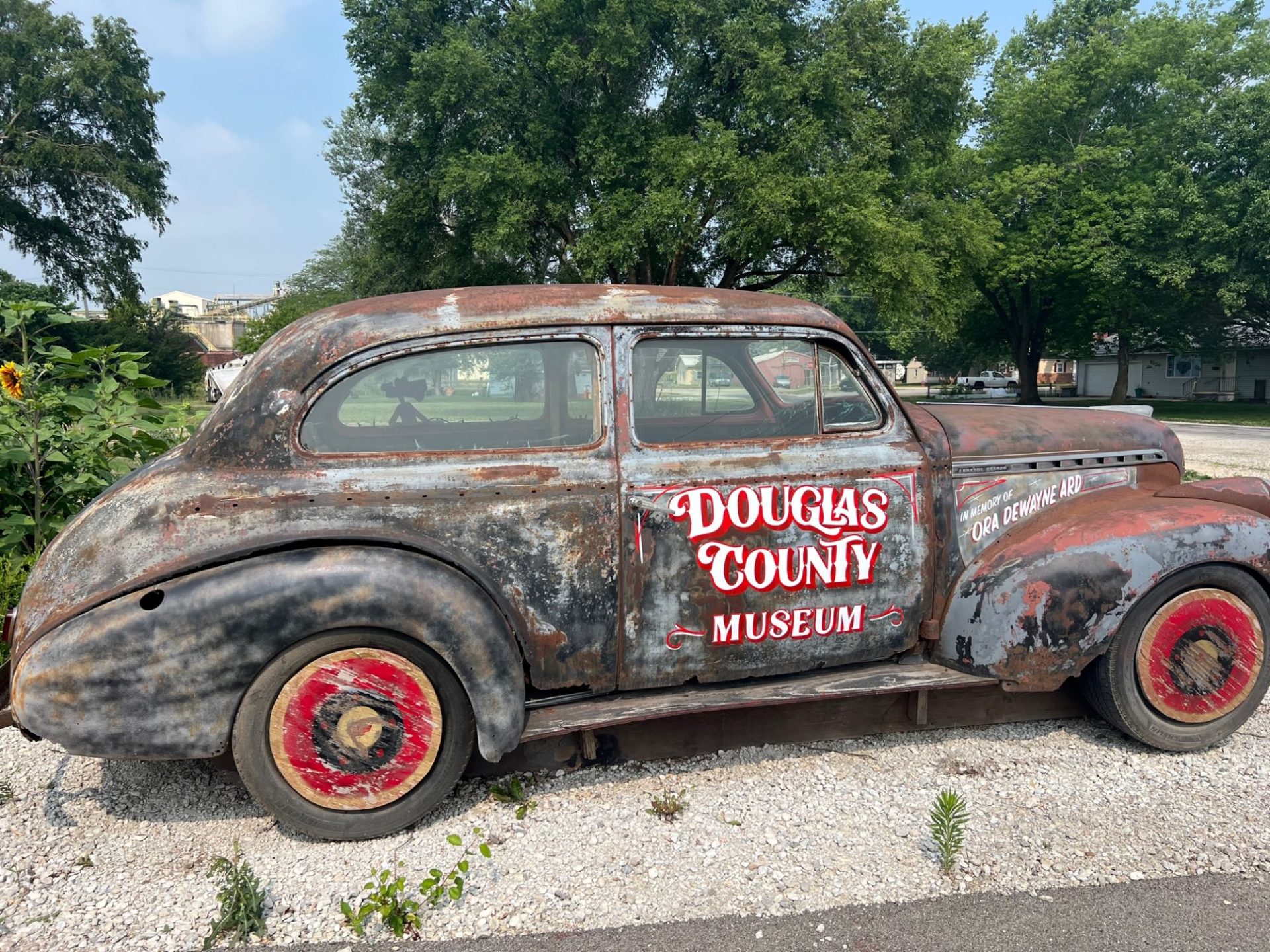
In one corner of the parking lot was a patch of flowers, being tended that day by board secretary Bruce Wood, who kindly welcomed me to the museum and pointed out its features before I began my browsing. An old car, that has been decoratively painted, sits alongside the flower bed. According to the museum’s Facebook page, this is a new addition.
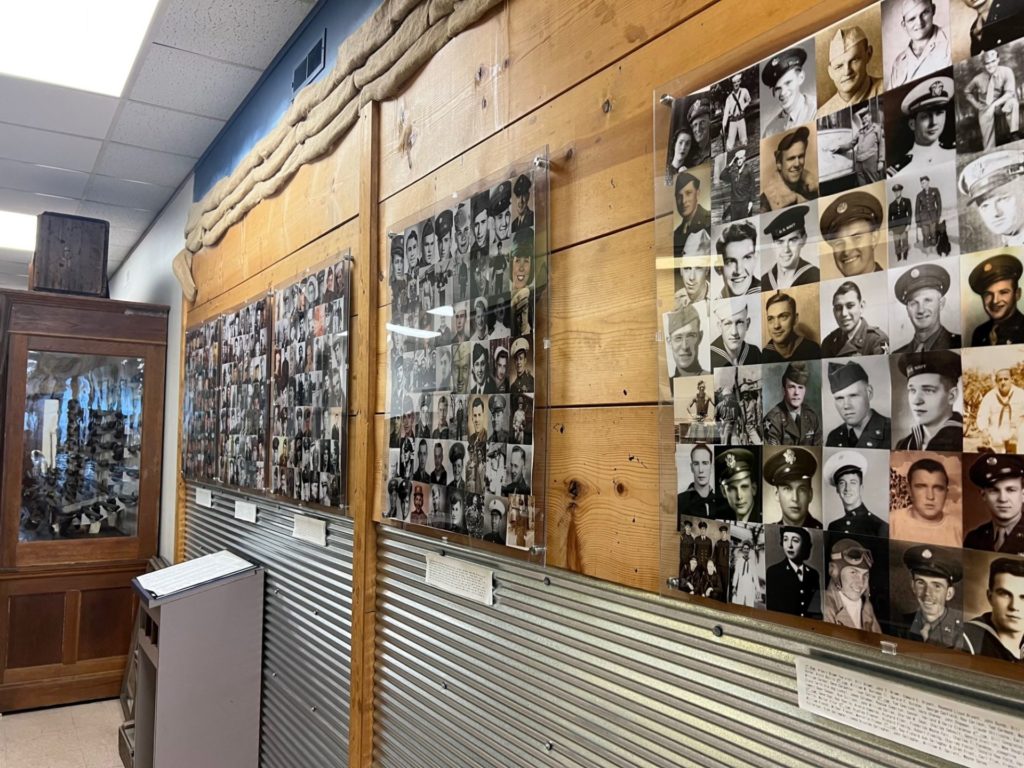
There are two portions to the museum. The first is a detailed exhibit that centers those from Douglas County who have served in wars from the Civil War to the wars in Afghanistan and Iraq. You get a good bit of general history of each war, alongside a decent collection of artifacts donated by area residents. It’s a nice tribute to those who have served in the military.
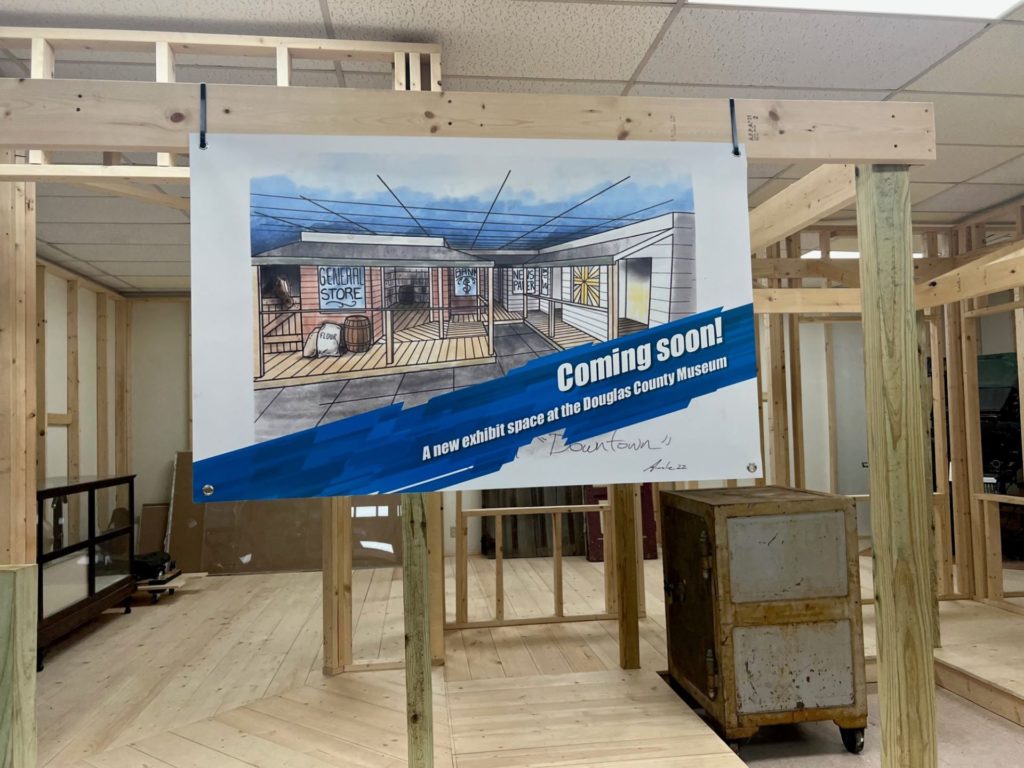
The second portion of the museum was sort of in flux, as they are in the midst of creating a brand new exhibit that recreates a business district as it might look in the Douglas County of the early 20th century. You can read more about the planned project here. There was still plenty to look at though, and these are some of the displays that stood out to me.
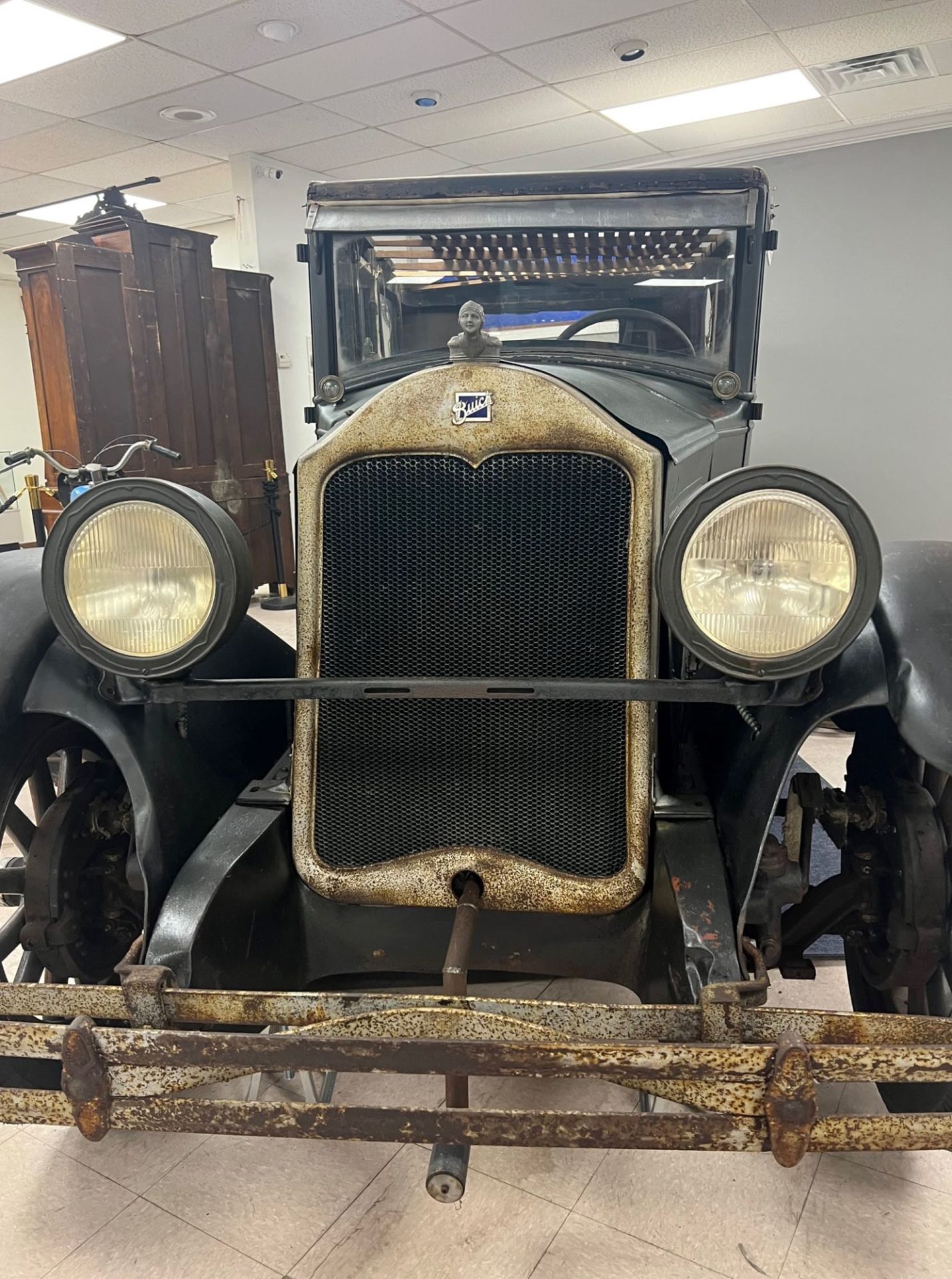
This 1928 25th anniversary Buick, nicknamed “Betty.” Why do so many people name cars Betty? Or Bessie? Or Betsy?
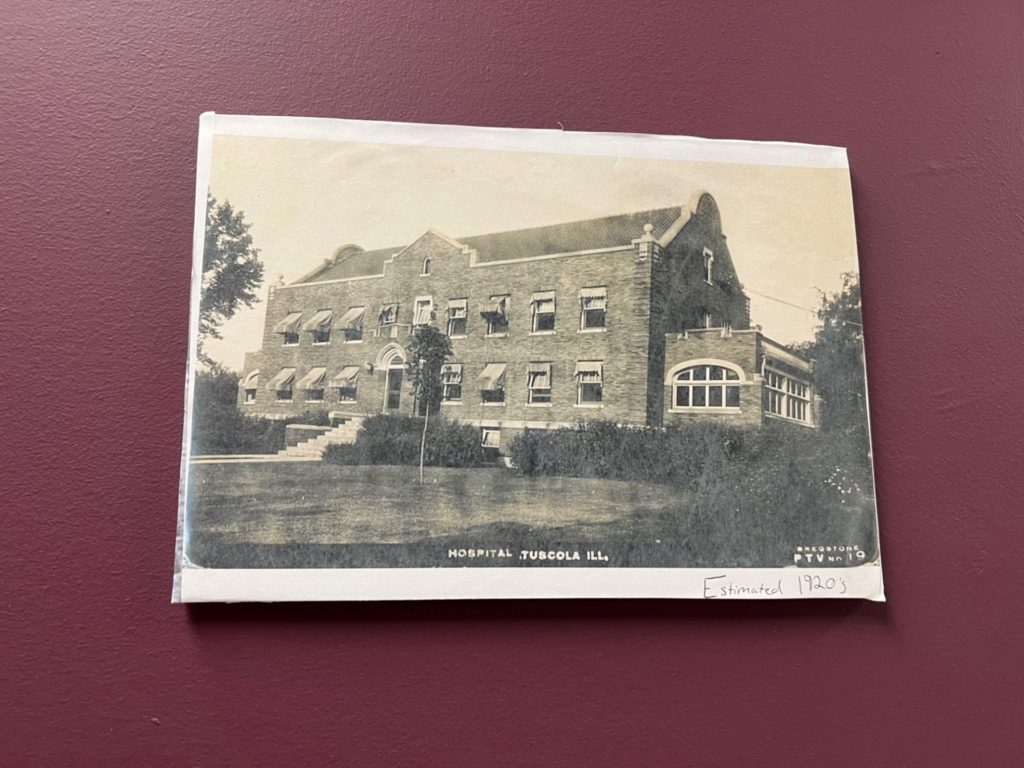
A display about Jarman Hospital, which opened in 1919, became an assisted living facility, and is now being made into an apartment complex.
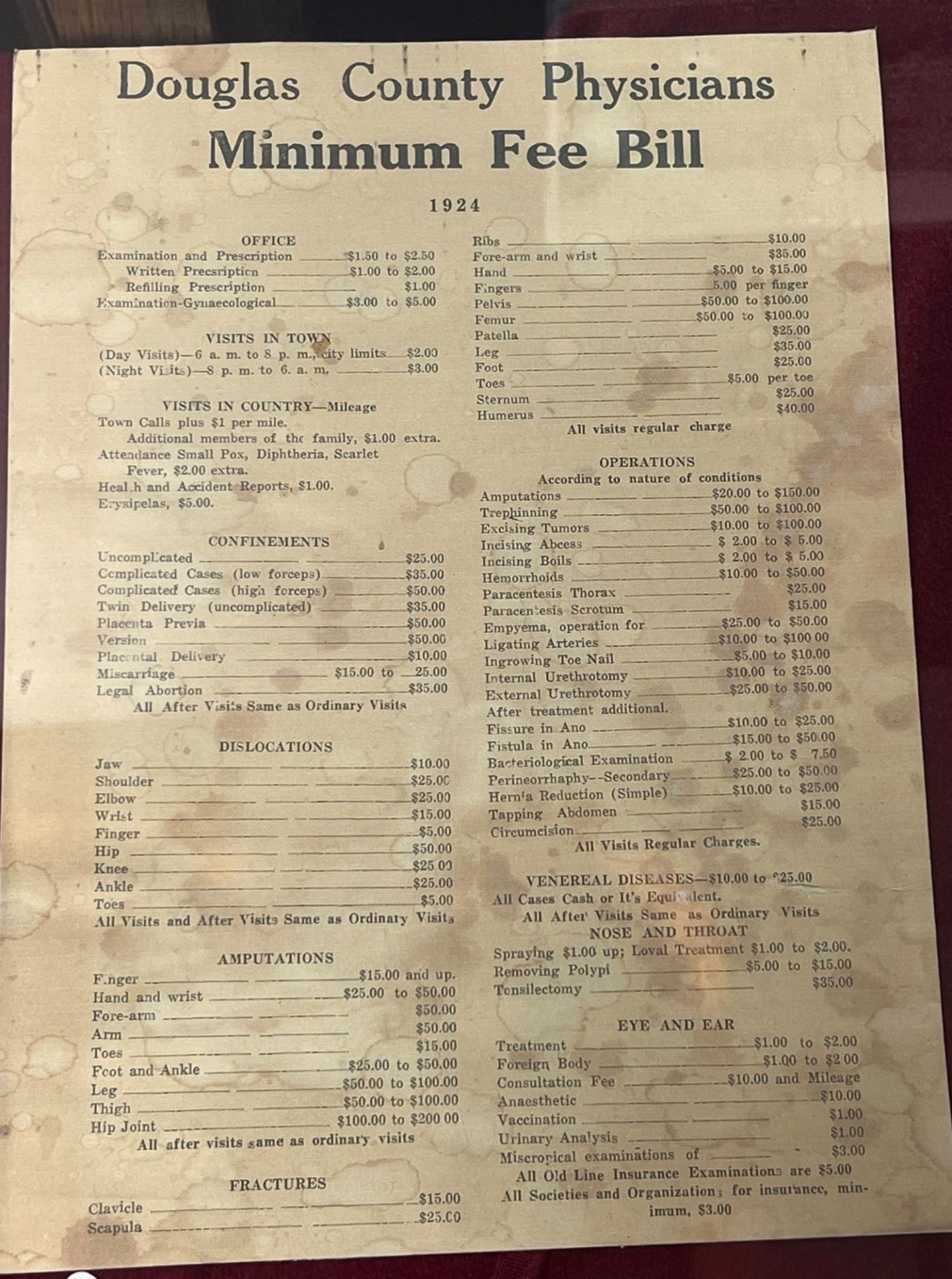
The most fascinating part was this minimum fee bill, showing that an office exam cost between $1.50 and $2.50 ($3 to $5 for a gynecological exam, because of course it was more expensive). You could get an amputation for anywhere from $20 to $150, and treatment of venereal diseases was $10 to $25. Those were the days.
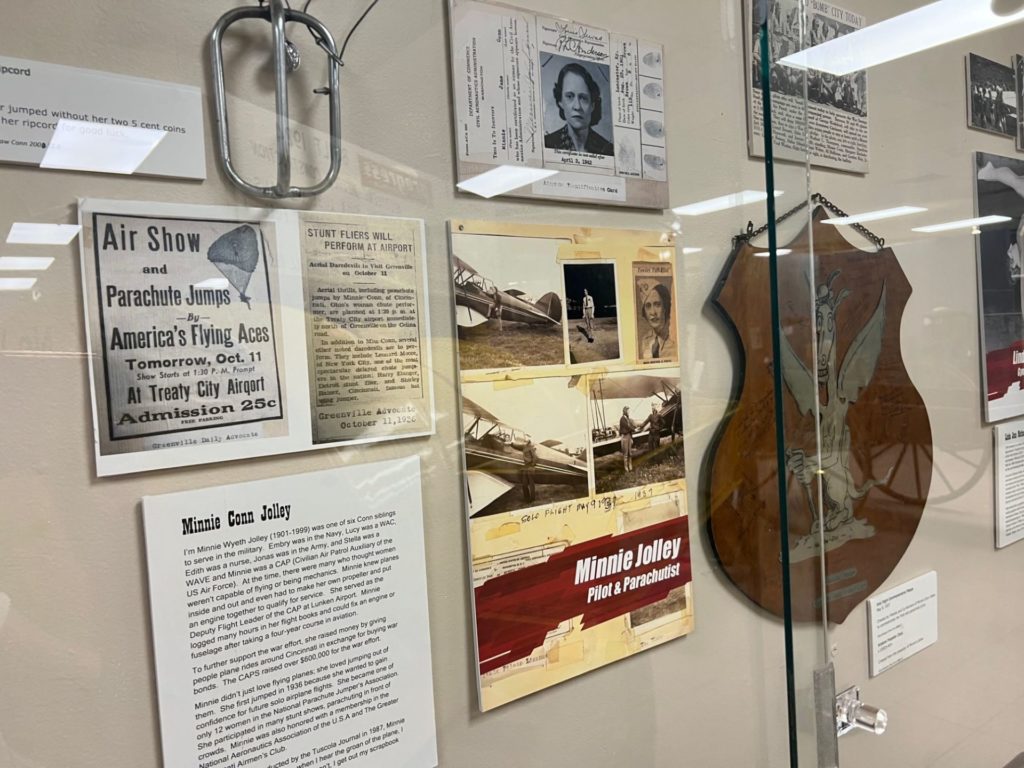
There was a good-sized exhibit featuring women in Douglas County, and the suffragette movement generally. Notable people from the area include: 90210 star Jennie Garth, who grew up on a ranch in between Sadorus and Arcola; Minnie Conn Jolley, who was a pilot and parachute jumper who participated in stunt shows; Linda Metheny, who was a gymnast and Olympian, competing in the 1964, 1968, and 1972 games.
The museum recently held a photography contest, and the many submissions were on display.
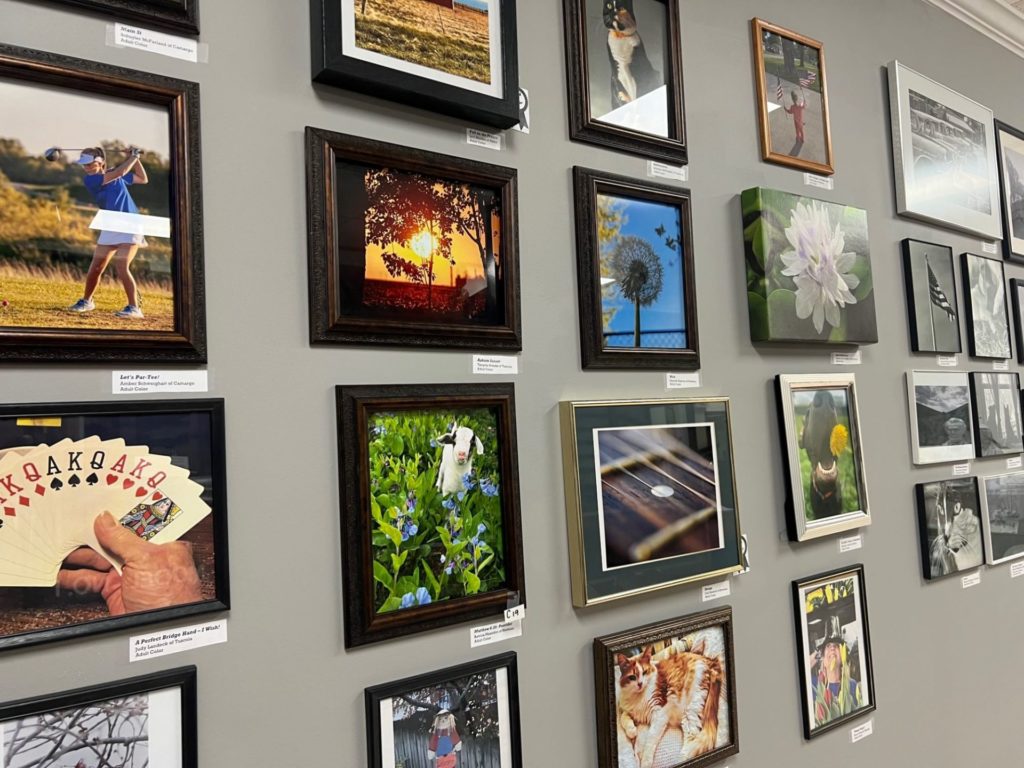
You can grab a Downtown Historic Walking Tour booklet from the museum for $5 (cash). I did that, and drove back into the downtown district to see the landmarks in the book.
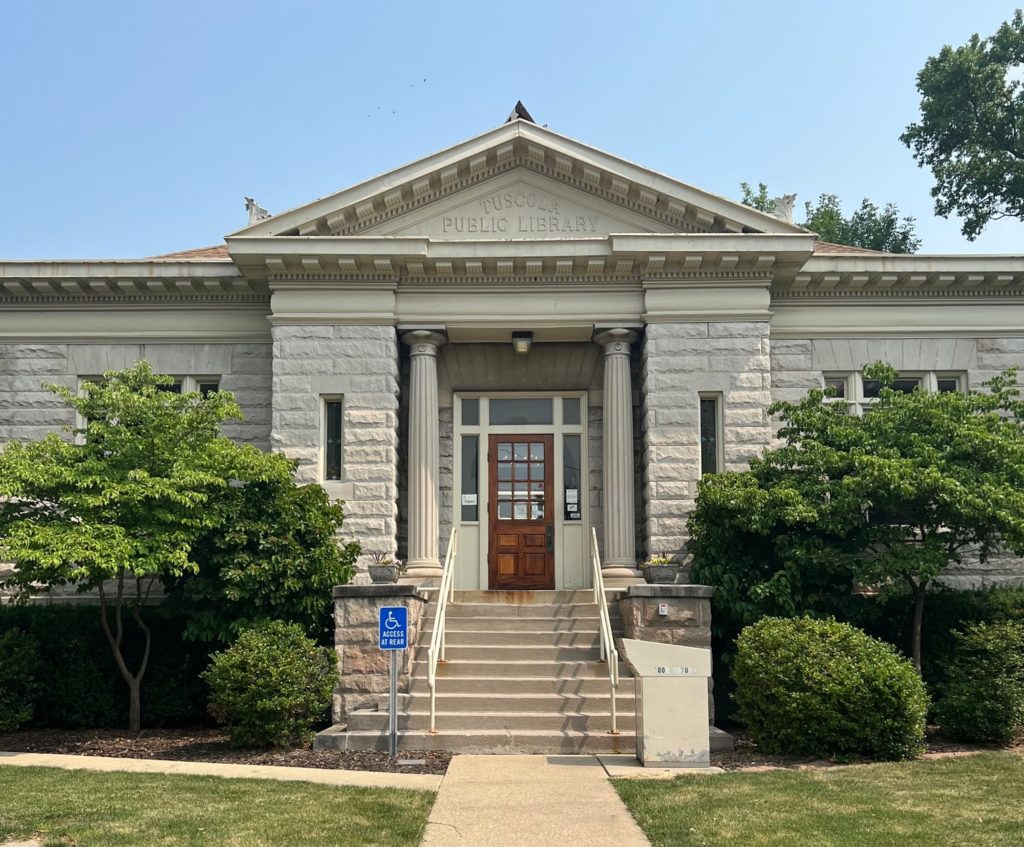
The library building has been there since 1904.
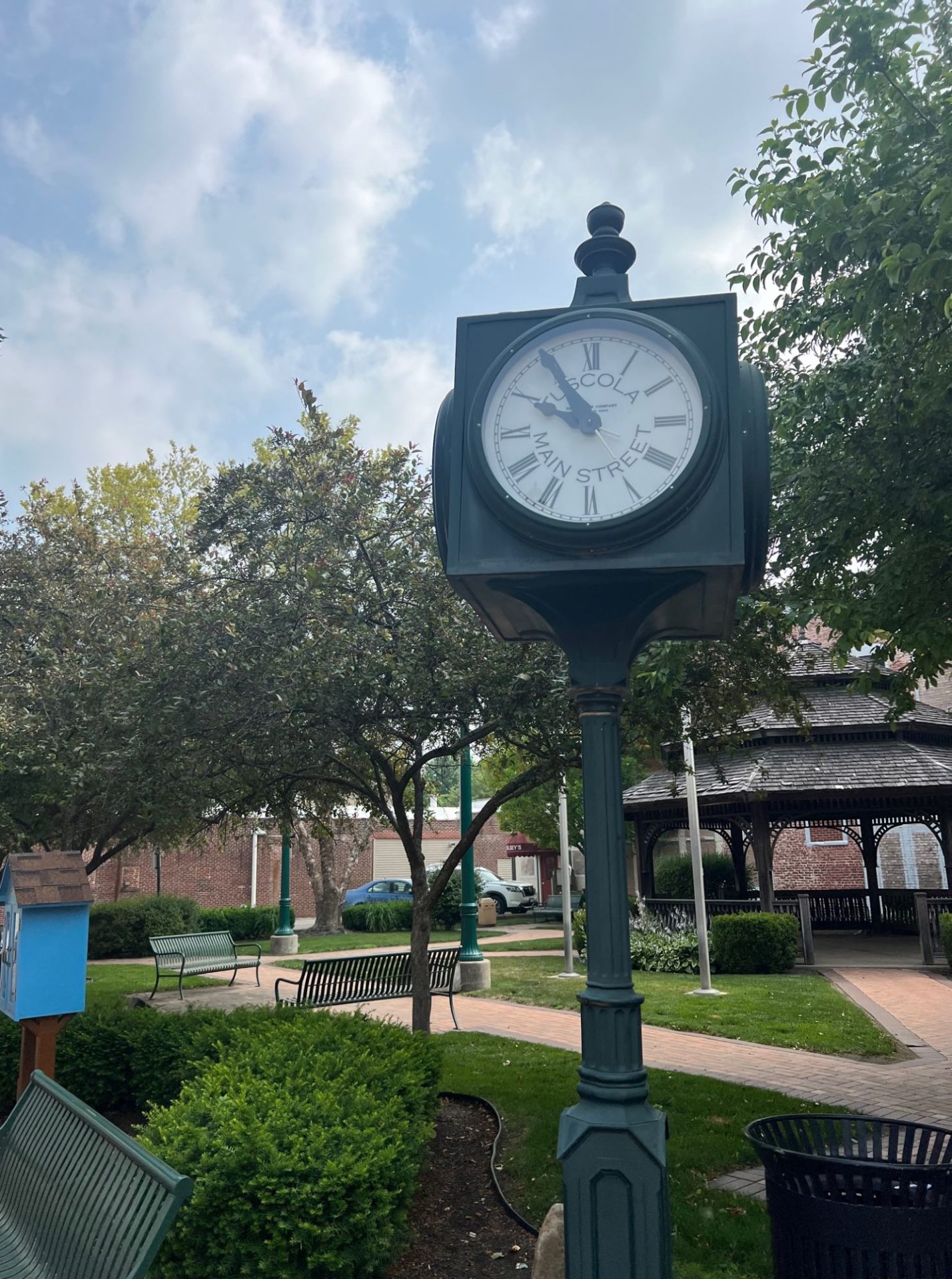
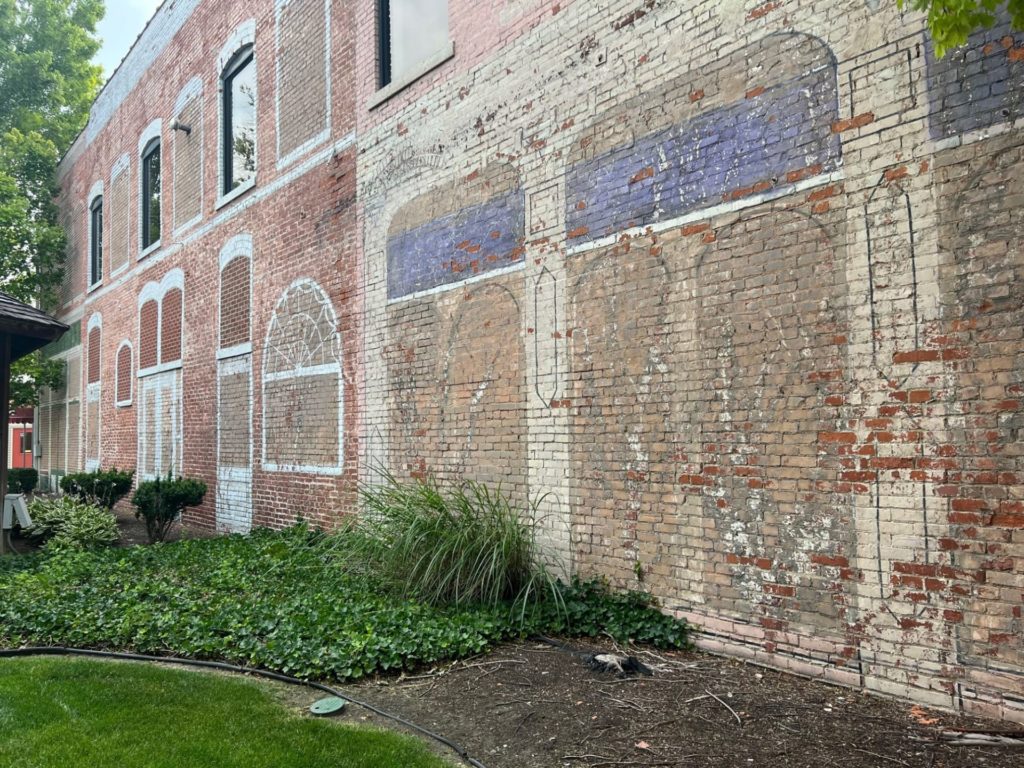
Just down the road is a nice little plaza with a gazebo, little free library, and free pantry set up by the Odd Fellows. It turns out, this was where the Douglas Hotel was located until 1975, when it burned down. It remained a vacant lot until 2000, when the city created Festival Plaza.
The tour takes you mostly along a block of Sale Street and a block of Main Street that was the core of retail businesses, and it still is, though maybe not as robust as it once was.
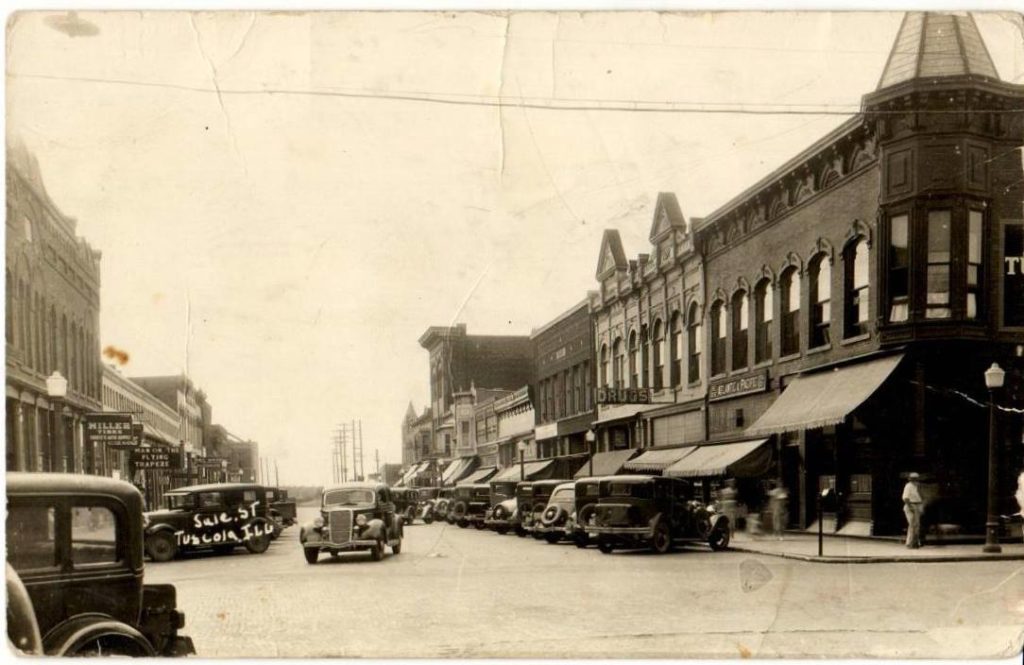
There are interesting pages in the booklet that show the evolution of these blocks from throughout the decades, and the 1930s and 1940s were definitely a heyday.
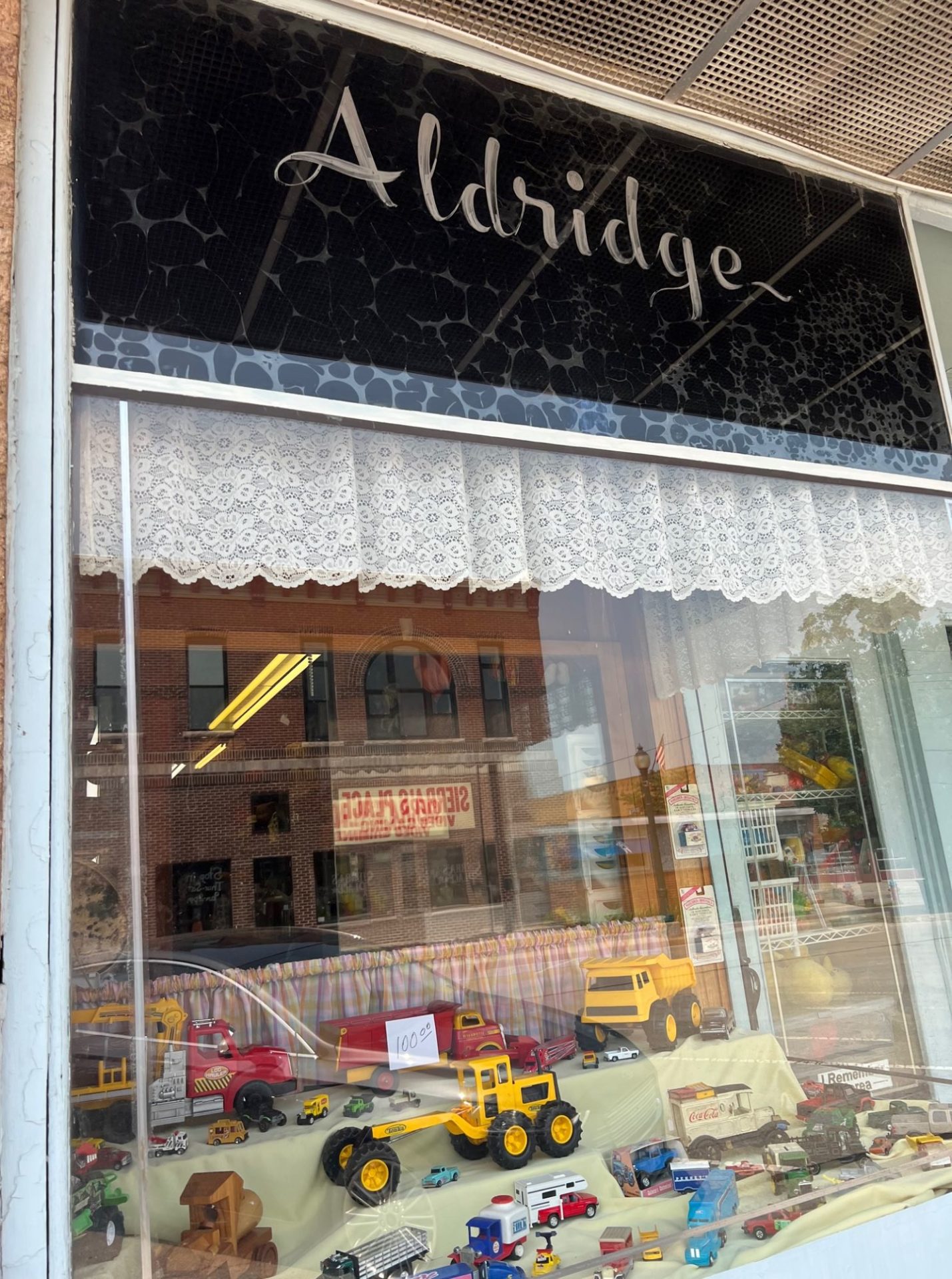
I popped into a store called Aldridge. It was once a jewelry store, then an antique store, and now it’s owned by Lynnita Brown, who took over the shop after her mother passed. She’s created a collectibles store that is unlike anything I’ve seen. If you don’t like close spaces and clutter then this is not a place for you. But if you like to treasure hunt, then you can spend quite a bit of time here. It feels somewhat chaotic in there, but once I took a minute to adjust to my surroundings, I realized it’s quite organized.
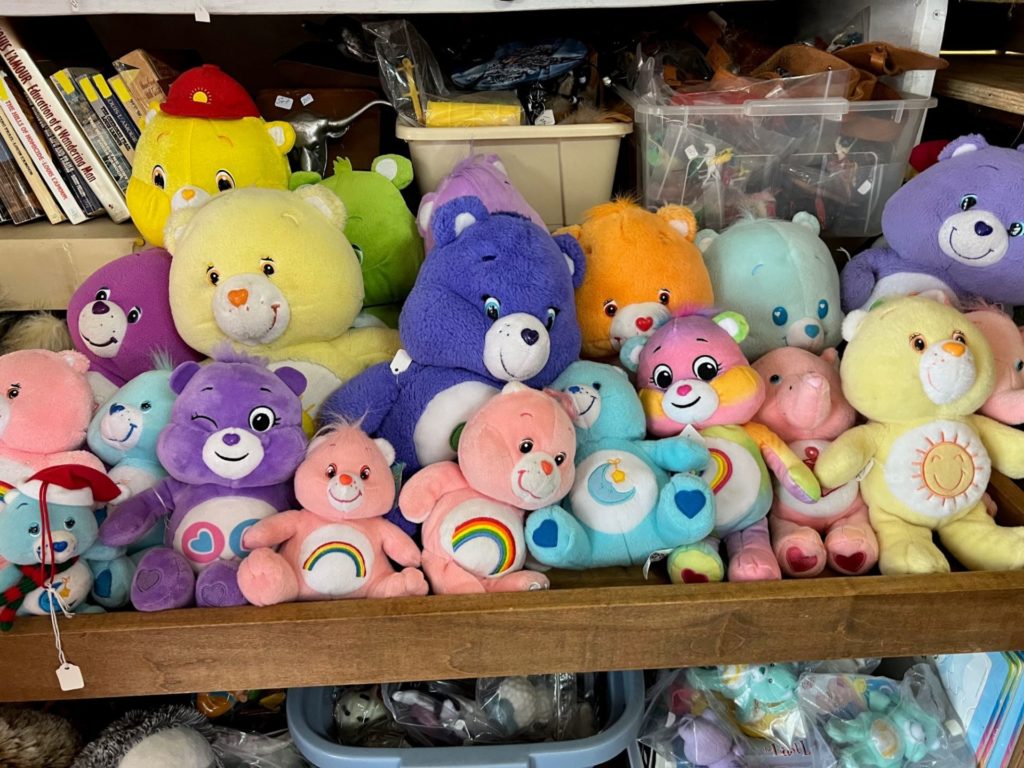
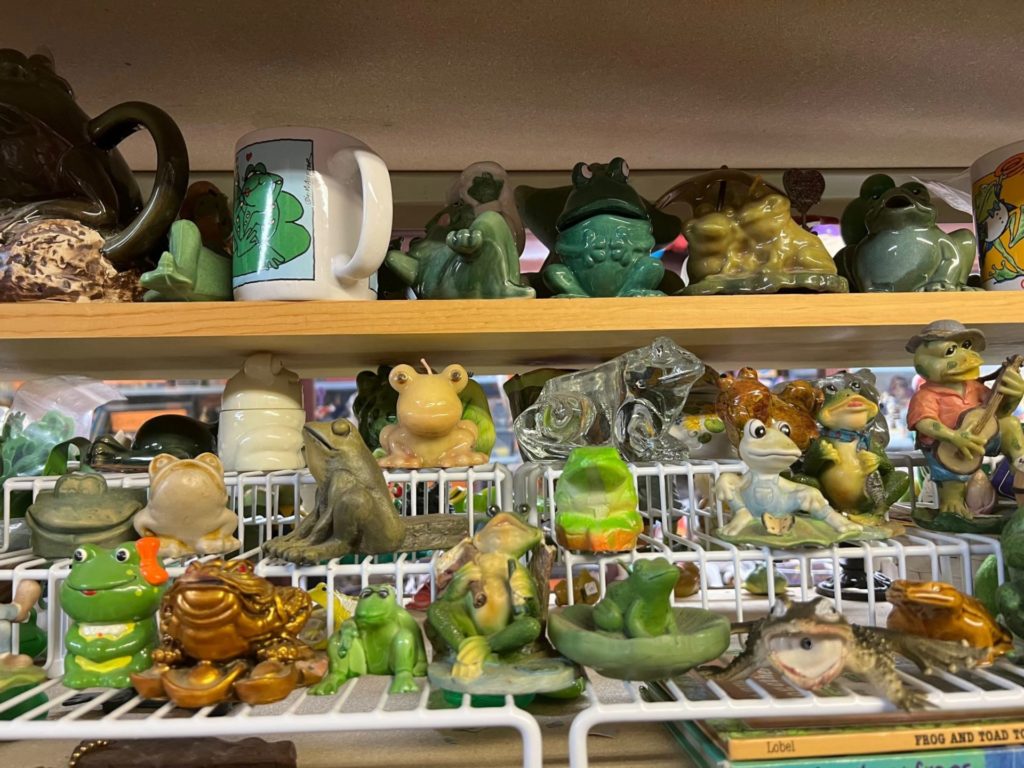
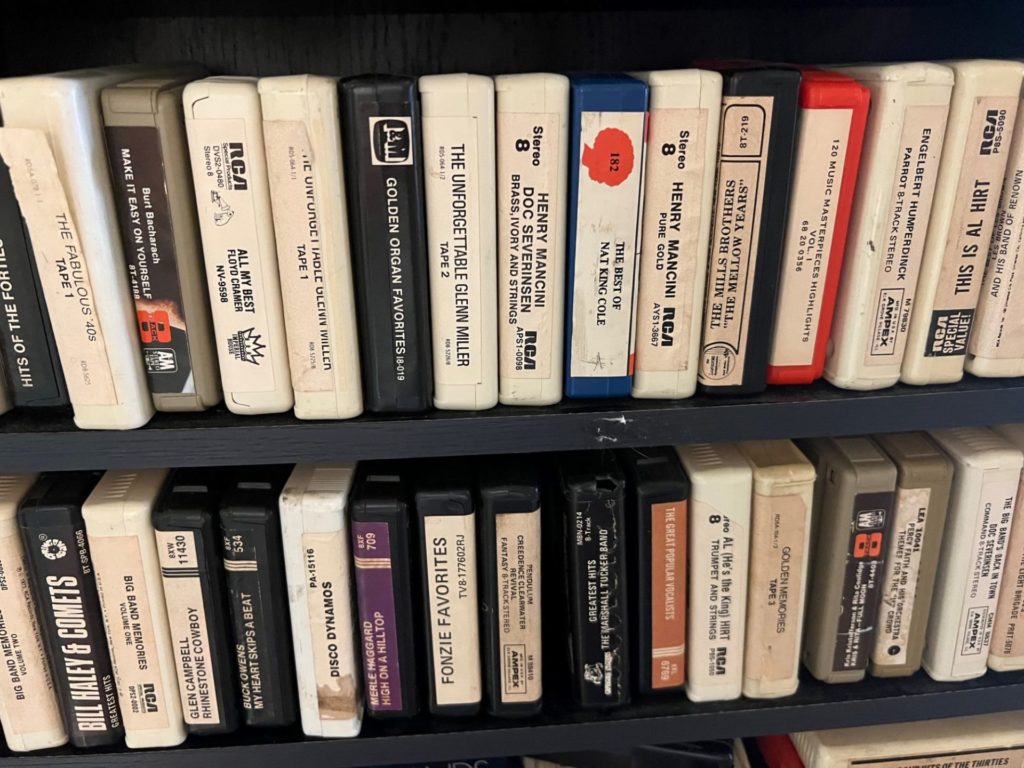
Anyone still have an 8-track player?
I’m certain if you named an item, Brown could tell you if she had it and where it was located. She works at the Senior Center next door, and opens the store if people come and ask her to, though she’s always open on Saturdays. Brown is also very knowledgeable about the Korean War, and has an extensive website on the topic.
Next, I headed around the corner to The Vault Art Gallery. This was probably my favorite stop of the day. There are 50+ artists represented there, and they take shifts running the gallery.
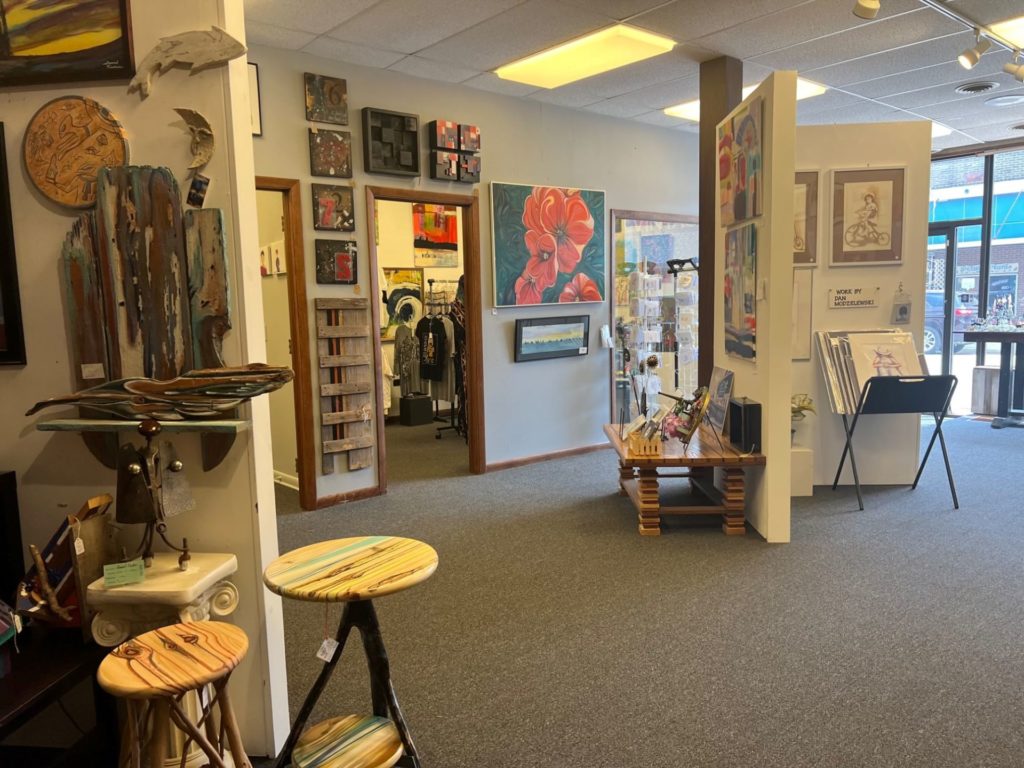
The artists represented are from the region, and you can find items in all sorts of price ranges and a variety of media.
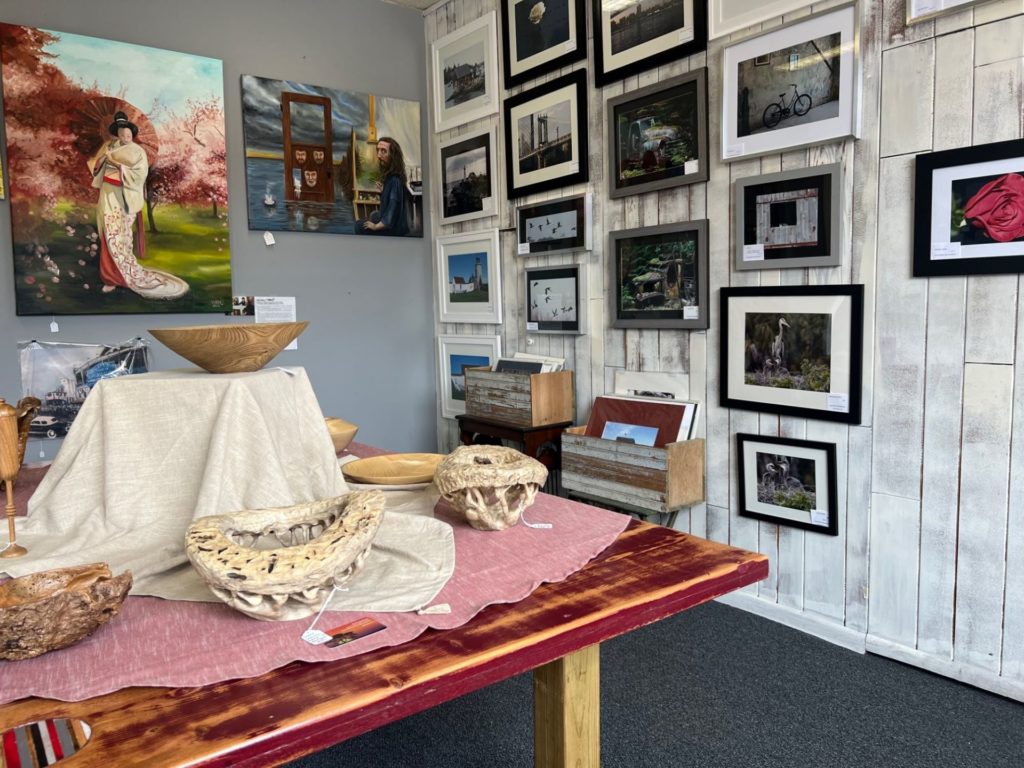
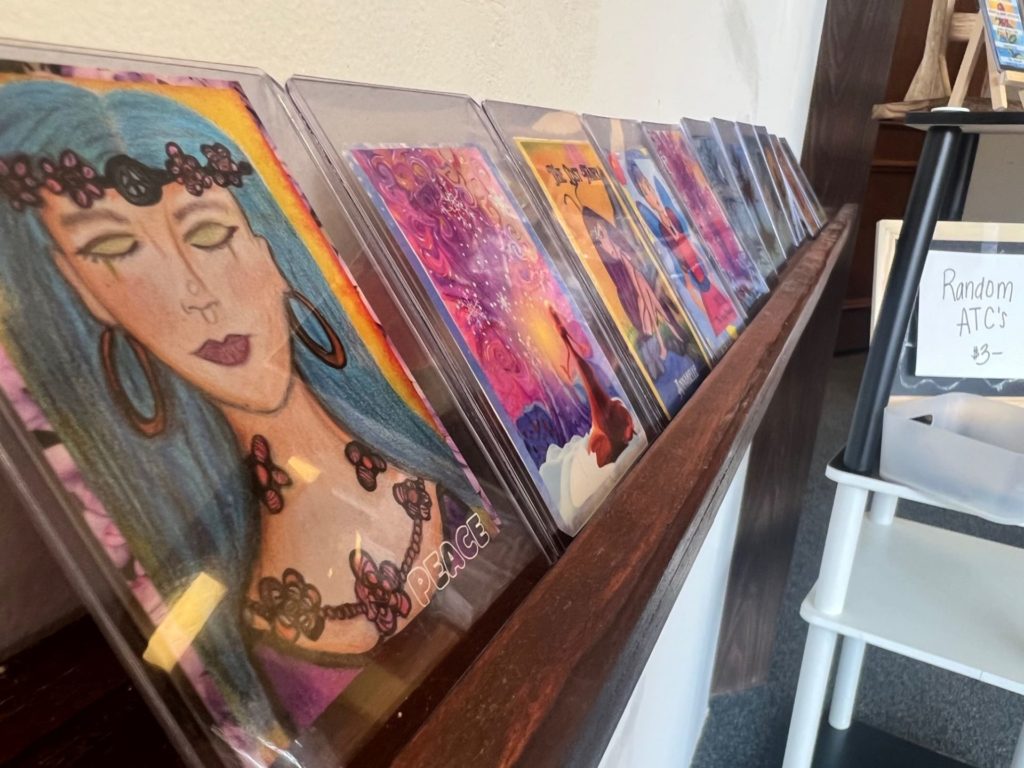
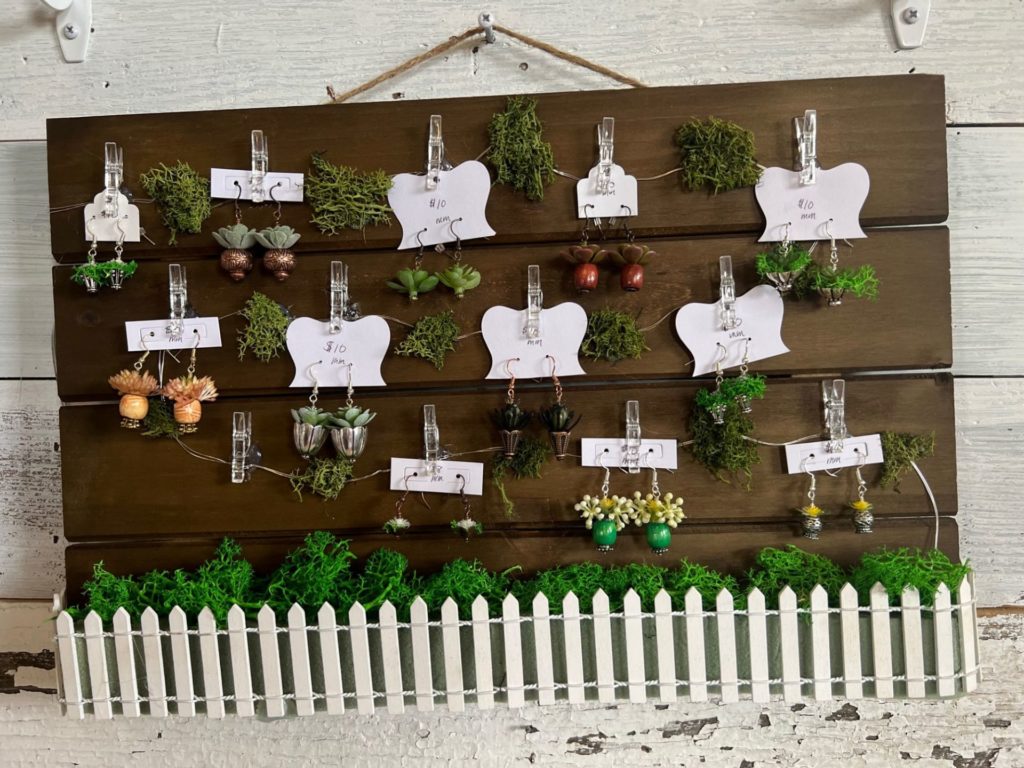
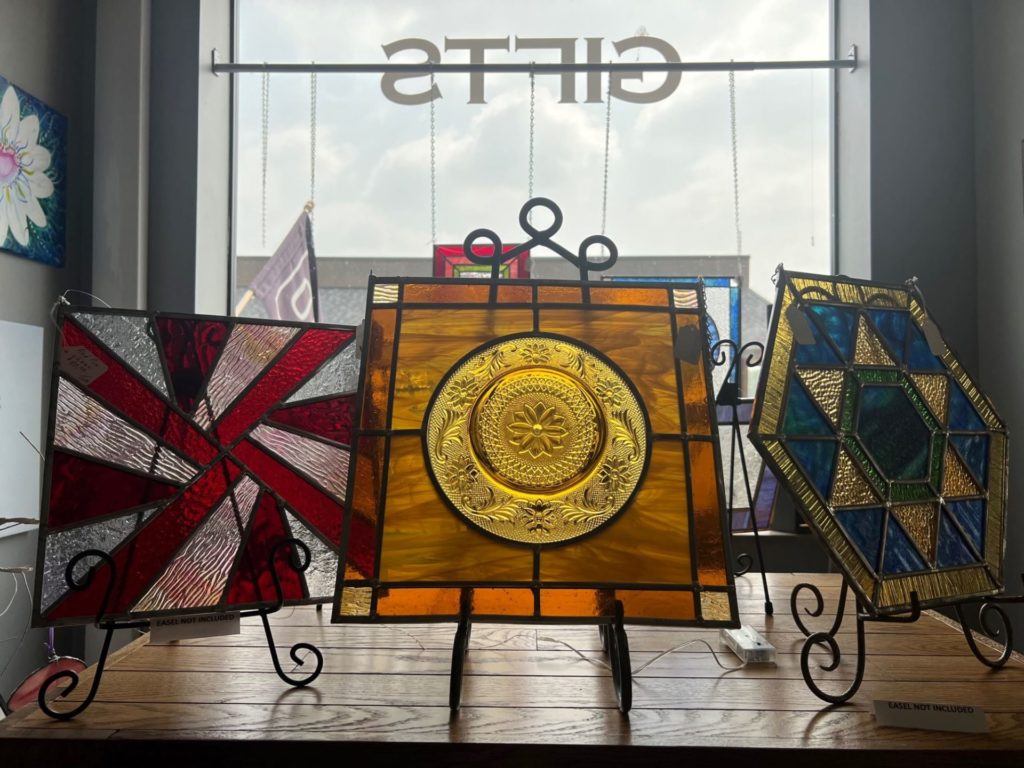
Painter Tim Pittenger was manning the space that day, and he was so kind and helpful in enthusiastically pointing out the work throughout the gallery. I complimented his choice of music (it was a jazz standards sort of station) and we chatted a little about John Prine.
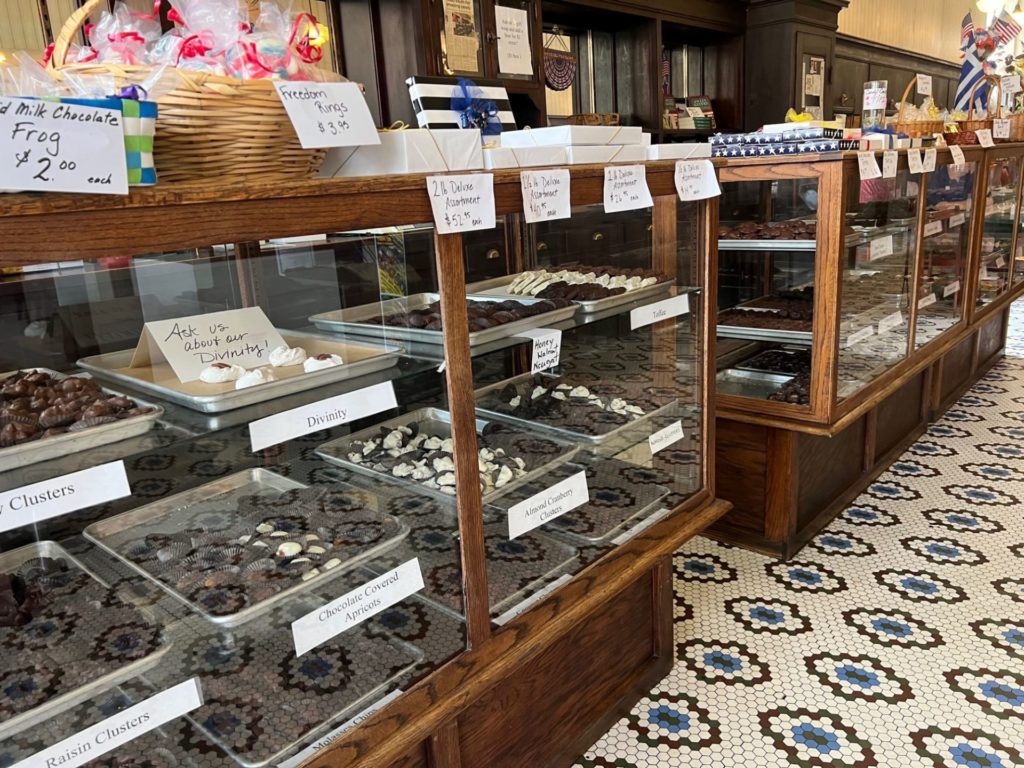
My final stop brought me full circle to Flesor’s, where I picked out some gummy bears, coffee bark, and a box of assorted chocolates (in my house we call that gamble chocolate). I might share it all with my family.








